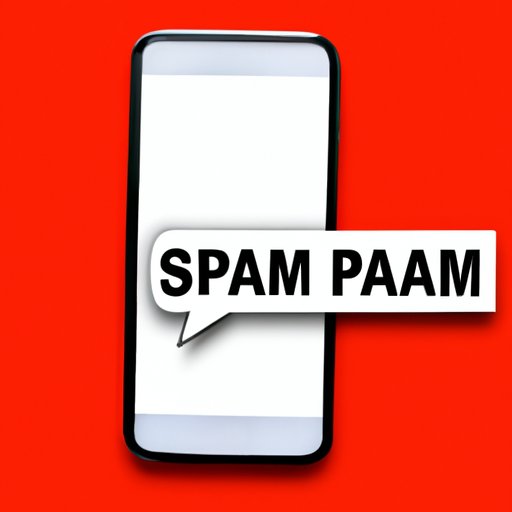
Introduction
Receiving messages on your iPhone can be a great way to stay connected with friends, family, and colleagues. However, unwanted messages can be a nuisance and even dangerous. Spam and scam messages are increasingly common, and can lead to phishing attempts, identity theft, and other security issues. In this article, we’ll explore how to block messages on iPhone and avoid these potential hazards.
Step-by-Step Guide to Using the Built-In Blocking Feature on iPhone
The built-in blocking feature on the iPhone is an easy way to block phone calls and text messages from specific numbers. Here’s how to access it:
- Open the Phone app and navigate to the recent calls list.
- Find the contact you want to block and tap on the “i” icon next to their name.
- Scroll down and tap on “Block this Caller.”
- A pop-up screen will appear, asking you to confirm your choice. Tap “Block Contact” to proceed.
Blocking a contact will prevent them from calling or sending text messages to your iPhone. If you want to unblock a contact later, simply follow the same steps and tap “Unblock this Caller” instead.
Benefits of Blocking Messages
Blocking messages can offer a variety of benefits for iPhone users. Firstly, it can help reduce the amount of unwanted messages you receive on your device. This can be especially useful for users who regularly receive spam or promotional messages.
In addition, blocking messages can help you avoid potential scams and phishing attempts. Scammers often use text messages to trick users into revealing sensitive information, such as passwords or credit card details. By blocking unknown numbers and suspicious messages, you can limit your exposure to these risks.
Some examples of messages you may want to consider blocking include:
- Messages from unknown senders
- Messages offering prizes or rewards that are too good to be true
- Messages directing you to click on a link or download an app
- Messages claiming to be from official companies or government agencies, but with a suspicious sender address
Third-Party Blocking Apps
In addition to the built-in blocking feature on the iPhone, there are a variety of third-party blocking apps available on the App Store. These apps offer additional features and customization options that may be useful for some users.
One popular example is Truecaller, which allows you to identify and block unknown callers based on their phone number. You can also use Truecaller to block SMS and spam messages, and even search for telephone numbers to identify potential spam or scam numbers.
Other popular blocking apps include Hiya, which offers spam detection and caller ID features, and RoboKiller, which uses machine learning to block unwanted calls and text messages.
While third-party blocking apps can be useful, it’s worth noting that they often require access to your contacts and other personal information. Be sure to research the app and its privacy policy before downloading and using it.
Educating Users on Avoiding Phishing and Scam Messages
Blocking messages is an important step in protecting yourself from potential scams and phishing attempts. However, it’s also important to educate yourself on how to identify suspicious messages and avoid falling victim to these scams.
Some key tips to keep in mind include:
- Avoid replying to messages from unknown or suspicious senders
- Don’t click on links or download files from unknown senders
- Don’t provide sensitive personal information via text message, unless you’re certain of the sender’s identity
- Be wary of messages claiming to be from official companies or government agencies, especially if they ask you to provide sensitive information or click on a link
If you receive a suspicious message, you can report it to Apple by forwarding the message to “abuse@icloud.com”. Apple will investigate the message and take any necessary actions to prevent further abuse.
Troubleshooting Guide to the Blocking Function on iPhone
If you encounter any issues while blocking messages on your iPhone, there are several common solutions that may help. Here are a few tips to keep in mind:
- If you accidentally block an important contact, you can unblock them by following the same steps you used to block them, and tapping “Unblock this Caller”.
- If you’ve deleted a blocked contact and want to prevent it from being reactivated, you can take further steps. Go to Settings > Messages > Blocked, and tap “Edit”. Then, tap the red “-” sign next to the contact, and confirm that you want to delete it permanently.
- If you’re still receiving messages from a blocked contact, it’s possible that they’re using a different phone number or email address. Check your blocked list to confirm that the correct contact is blocked, and add any new numbers or email addresses as needed.
Conclusion
Blocking messages on iPhone is a simple process that can help improve your messaging experience and protect you from potential scams and security risks. Whether you use the built-in blocking feature or a third-party app, be sure to follow best practices for avoiding suspicious messages and report any issues to Apple if necessary. By taking these steps, you can enjoy a safer and more secure messaging experience on your iPhone.





